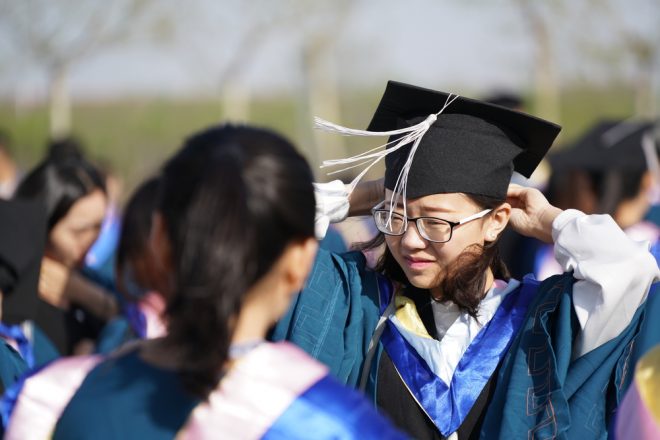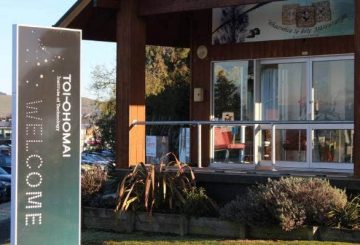New Zealand and China strengthened their partnership in the higher vocational education sector with ideas and best practices exchange at the two-day long China-NZ Summit on Higher Vocational Education, on the sidelines of the recently concluded APAC TVET Forum.
The China-NZ summit focused specifically on the bilateral partnership on higher vocational education.
“New Zealand and China have shared many years of cooperation in the higher vocational education sector,” Lisa Futschek, general manager International at Education New Zealand highlighted.
In February, New Zealand and China spoke about the bilateral model Vocational Education Program at the New Zealand-China 9th Joint Working group on Education and Training, Futschek noted.
“As we enter the ninth year of education cooperation in higher vocational education, New Zealand is pleased to have Te Pūkenga – New Zealand Institute of Skills & Technology, our newly established public network of vocational and applied education provision, step into the leading role of taking vocational education cooperation forward.
“The strength of our partnership is recognised as exemplary, resulting in the establishment of the APAC-TVET Forum, connecting governments, institutions, and businesses across a much broader region and expanding on our successful partnership,” she said.
Xu Yongji, deputy director general at the Department of International Cooperation and Exchanges within Ministry of Education of China addressed the delegates on an optimistic note.
“The overall level of vocational education has entered the forefront of the world, and the main goal of the basic construction of a skilled society.
“New Zealand has a wealth of experience and advanced ideas in vocational education and training, and has cultivated many people with innovative creativity and adapted to market demand, and is an ideal partner for vocational education and training reform in China,” he said.
“In the future, vocational education exchanges and cooperation between China and New Zealand will be closer.
“It is hoped that the two countries can carry out more cooperation in strengthening the characteristics of vocational education, perfecting the system of integrating production and education, innovating the mechanism of cooperation between schools and enterprises in running schools, deepening the reform of vocational education teaching, and building the brand of special vocational education; so as to train more high-quality vocational and technical personnel for the socio-economic development of China and New Zealand,” said Yongji.
“What is the most important thing in the world, it is the people, the people, the people,” said Tony O’Brien, director of the Sino-NZ program at Te Pūkenga subsidiary WINTEC.
“Collaboration between our two sectors may involve discussion of systems, pedagogy and processes, but at the end of the day, it comes down to people, to relationships,” he said.
“In the modern economy, it is vital we work with both our minds and our hands. The innovators of tomorrow will be adept at both. This duality, this skill of thinking and doing is best imparted by an education system that encourages learning by doing, a system that encourages students to think critically and creatively and take the opportunity to challenge and explore. It is vital that our institutions, through our leaders and our teachers, model exactly these behaviours.”
“Doing so will help inspire and produce the technical and professional workforce New Zealand and China need; as signalled explicitly by the Made in China 2025 plan, the 15th Five Year Plan and implicitly by New Zealand’s own reform,” O’Brien noted.
Leon de W Fourie, chair International Working Group – Te Pūkenga, gave a glimpse of New Zealand’s draft International Education Strategy 2023-2028.
“The establishment of Te Pūkenga has created the opportunity for the development of a unified International Education Strategy across the sector. Te Pūkenga is focused on using its size and scale to create a high value future for learners, and New Zealand, through outstanding international education and global connectedness,” he highlighted.
“Establishment of Te Pūkenga creates a strong, unified, sustainable, higher vocational and applied tertiary education system that is fit for the future of work and delivers the skills that learners, employers and communities need to thrive.”
Speaking specifically about the Sino-NZ cooperation, international programs, such as the Sino-NZ Model Programme, part of the Strategic Education Partnership Agreement between New Zealand and China, are examples of excellence and best practice in the current network’s engagement internationally, he suggested.
“We plan to retain and scale up these programs through Te Pūkenga.
“One of the central themes that has come out of our international education strategy development so far is to increase our offshore delivery footprint. We intend to maintain our current offshore campuses, scale them up where appropriate and establish new campuses.”
Fourie told the attendees that Te Pūkenga “will have a one to five year transition plan developed by mid-2022”.
“While some things must be in place by January 1, 2023, we expect some international education processes and activities will require more time to transition,” he concluded.
SOURCE: PIE news





























































